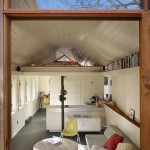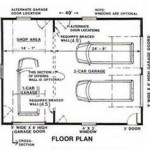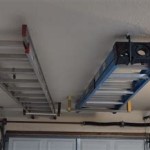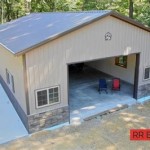Finishing Garage Walls: A Comprehensive Guide
Finishing the walls of a garage is a significant project that enhances both the aesthetic appeal and the functionality of the space. From protecting against damage to creating a more comfortable and organized environment, finished garage walls offer a multitude of benefits. This article provides a comprehensive overview of the process, considerations, and materials involved in finishing garage walls effectively.
Assessing the Garage and Planning
Before commencing any work, a thorough assessment of the garage's existing condition is crucial. This assessment involves identifying any existing damage, such as cracks, water stains, or pest infestations. Addressing these issues before finishing the walls is paramount to prevent future problems and ensure the longevity of the finished surface. The assessment should also include evaluating the structural integrity of the walls to ensure they can support the weight of any added materials.
Planning also needs to include the intended use of the garage. Will it primarily be used for parking vehicles? Will it also function as a workshop, storage area, or recreational space? The intended use will influence the choice of finishing materials. For example, a workshop might benefit from durable and impact-resistant wall coverings, while a recreational space may prioritize aesthetic appeal and insulation.
A detailed plan should also outline the materials required, the budget, and the timeline for the project. It is advisable to create a realistic budget that accounts for potential unforeseen expenses. A well-defined timeline helps maintain momentum and ensures the project is completed efficiently.
Preparing the Walls for Finishing
Preparation is the foundation of a successful wall-finishing project. This involves cleaning the existing walls thoroughly to remove any dirt, dust, grease, or debris. A pressure washer can be effective for cleaning concrete or brick walls, while a scrub brush and detergent are suitable for drywall or wood surfaces. Ensure the walls are completely dry before proceeding to the next step.
Repairing any cracks or holes is another critical step. For minor cracks in concrete walls, a concrete patching compound can be used. Larger cracks may require professional attention to address underlying structural issues. Drywall cracks can be repaired using drywall tape and joint compound. The repaired areas should be sanded smooth to create a seamless surface.
Priming the walls is essential for ensuring proper adhesion of the finishing material. A primer creates a uniform surface and helps to seal porous materials. The type of primer should be selected based on the wall material and the finishing material being used. For example, a latex primer is suitable for drywall, while an epoxy primer may be recommended for concrete.
Choosing the Right Finishing Materials
The selection of finishing materials is crucial for achieving the desired aesthetic and functional outcome. Several options are available, each with its own advantages and disadvantages.
Drywall is a common choice for garage walls due to its affordability, ease of installation, and smooth surface. It can be painted, textured, or covered with wallpaper to achieve a variety of looks. However, drywall is susceptible to moisture damage and may not be ideal for damp or humid garages.
Plywood offers a more durable and impact-resistant alternative to drywall. It is suitable for garages that are used as workshops or storage areas where walls are likely to be subjected to wear and tear. Plywood can be painted, stained, or sealed to protect it from moisture. However, it may not provide as smooth a surface as drywall.
Oriented strand board (OSB) is another cost-effective option for garage walls. It is similar to plywood but is made from smaller wood chips that are compressed and glued together. OSB is less expensive than plywood but may not be as visually appealing. It can be painted or covered with other materials to improve its appearance.
Metal panels offer a durable and low-maintenance option for garage walls. They are resistant to moisture, fire, and pests, making them suitable for a variety of environments. Metal panels are available in a range of colors and finishes and can be installed relatively quickly. However, they may be more expensive than other finishing materials.
Concrete block is a durable and fire-resistant option for garage walls. It provides excellent insulation and soundproofing. Concrete block can be painted, stuccoed, or covered with other materials to improve its appearance. However, it is a more labor-intensive option than other finishing materials.
Epoxy paint is a durable and chemical-resistant coating that can be applied directly to concrete walls. It provides a seamless and easy-to-clean surface. Epoxy paint is available in a variety of colors and can be used to create a professional-looking finish. However, it requires proper surface preparation and can be more expensive than other paint options.
Installation Techniques and Considerations
The installation process varies depending on the chosen finishing material. For drywall, the sheets are typically attached to wall studs using screws. The seams are then taped and covered with joint compound, which is sanded smooth to create a seamless surface. Proper ventilation is necessary during the sanding process to minimize dust exposure.
Plywood and OSB can be installed similarly to drywall, using screws to attach the sheets to wall studs. The edges can be covered with trim to create a finished look. When installing plywood or OSB, it's crucial to ensure that the sheets are properly aligned and that the screws are driven in straight to prevent splitting the wood.
Metal panels are typically installed using screws or rivets. The panels should be overlapped to create a watertight seal. When installing metal panels, it's important to wear gloves to protect hands from sharp edges. Safety glasses are also recommended to protect eyes from flying debris.
When painting any of the aforementioned surfaces, applying multiple thin coats is preferable to applying one thick coat. This helps to prevent drips and runs and ensures a more uniform finish. Allow each coat to dry completely before applying the next one. When working with paints and other chemicals, proper ventilation is essential to avoid inhaling harmful fumes.
Insulation and Soundproofing
Adding insulation to garage walls can significantly improve energy efficiency and comfort. Insulation helps to regulate the temperature inside the garage, keeping it cooler in the summer and warmer in the winter. This can also reduce energy costs if the garage is heated or cooled.
Fiberglass batt insulation is a common and affordable option for garage walls. It is available in a variety of thicknesses and R-values, which measure its resistance to heat flow. Fiberglass batt insulation is relatively easy to install, but it requires proper handling to avoid skin irritation and respiratory problems. Wearing gloves, a mask, and eye protection is recommended during installation.
Spray foam insulation is another option that provides excellent insulation and air sealing. It is applied as a liquid that expands to fill gaps and crevices, creating a tight seal. Spray foam insulation is more expensive than fiberglass batt insulation but offers superior performance. Professional installation is often recommended to ensure proper application and avoid potential problems.
In addition to insulation, soundproofing materials can be added to garage walls to reduce noise transmission. This can be particularly beneficial if the garage is used as a workshop or recreational space. Soundproofing materials include acoustic panels, soundproof drywall, and mass-loaded vinyl.
Adding Electrical Outlets and Lighting
Finishing garage walls provides an opportunity to add or upgrade electrical outlets and lighting. It is essential to consult with a qualified electrician to ensure that all electrical work is performed safely and in accordance with local codes. Adding more outlets can increase the functionality of the garage, allowing for the use of power tools and other equipment.
Adequate lighting is crucial for both safety and productivity. Consider adding overhead lighting fixtures, such as fluorescent or LED lights, to provide ample illumination. Task lighting, such as work lights or spotlights, can be used to illuminate specific areas. When installing electrical outlets and lighting, it is important to use weatherproof materials to protect against moisture and corrosion.
Ensuring that all wiring is properly concealed behind finished walls is crucial for both aesthetic and safety reasons. Wiring should be run through conduit or cable protectors to prevent damage. All electrical connections should be made inside junction boxes to prevent exposed wires.
Ground fault circuit interrupters (GFCIs) should be installed in any outlets that are located near water sources, such as sinks or hoses. GFCIs are designed to protect against electrical shock by detecting ground faults and interrupting the flow of electricity.

How To Finish Your Garage Ideas Designs Salter Spiral Stair

Garage Wall Ideas 17 Ways To Improve Your Space

Best Alternatives To Drywall For Garage Walls Trusscore

Garage Makeover Finishing Walls Adding A Workspace

Best Alternatives To Drywall For Garage Walls Trusscore

Garage Wall Ideas 17 Ways To Improve Your Space

Garage Wall Covering And Finished Ideas

Garage Finishing Lakewood Co Ideas More

Creating A Finished Garage On Shoestring Budget

Garage Makeover Finishing Walls Adding A Workspace
Related Posts








